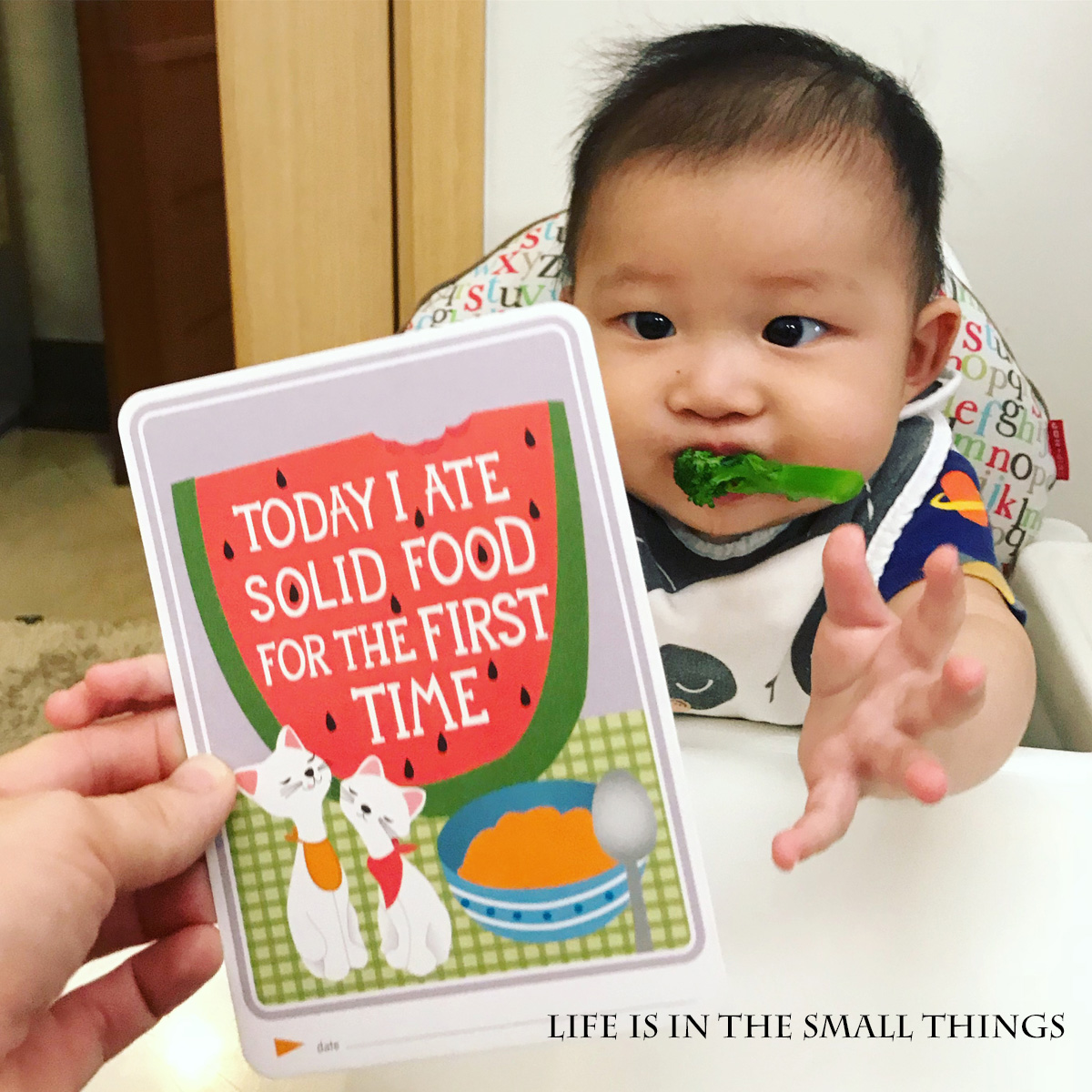My little man reached the 6 month milestone this month, and with it one of his biggest milestones — solid food!
This being the third time I’m weaning, I am, shall we say, more relaxed about the whole process. For one, I am in no hurry to start the whole business of pureeing food, now that I know how much more of a hassle it is to have to do food prep! Still, I can’t help but get excited about introducing Baby Nate to the world of food. And with his growing appetite for milk and his almost constant need to put things IN. HIS. MOUTH. I dare say his more than ready to take on the food challenge!

My hesitance about getting Baby Nate started on food before he turned 6 months was also due to the fact that this baby can go days before rewarding me with a massively stinky and massively massive dirty diaper. While a quick check with my paediatrician has confirmed that he was okay but that he would be at risk of being constipated on solids. I was anxious (and I still am!) that the weaning process go smoothly so I did some research on how to ease Baby Nate’s digestion. It has been some time since I’ve done this so many of these were good reminders to me!
1. Continue to give plenty of milk. Even after baby starts on solids, babies still continue to get most of their nutrition from their milk during their first year. Milk would in fact continue to be a main component of their diet during this time, though baby’s milk intake would slowly decrease as they eat more. As a general guideline, babies would take continue to about 700-800ml of milk when they first start solids, decreasing to about 550ml at about 1 year.
2. Introduce plenty of fruit in his diet. My paediatrician’s first recommendation was to wean Baby Nate on fruit. Fruit, with its naturally high fibre and liquid content would be easier on his digestive system than something like porridge. Pears are a good choice, as are apricots, prunes, plums and peaches. Vegetables like spinach and broccoli are also good choices. A note of caution though: High fibre foods are known to increase gas in the tummy, so if this causes your baby some discomfort, you can try feeding these foods during every other meal.
3. Maintain the 3-day rule to introducing new foods into his diet. Introduce new foods to a baby one food at a time for 3 days in a row. Introducing new food over the course of several days will allow you to better determine how your baby is reacting to the food. This is useful not only for checking for possible allergic reactions but also to help pinpoint foods that can also cause digestive troubles like tummy pains, painful gas or even poop troubles.
4. Try some baby massage. There are lots of videos on the internet demonstrating how to carry out baby massage to aid digestion. Personally, I’ve enjoyed doing this also as a time of bonding with Baby Nate. I rotate through sets of bicycling his legs, pressing on his abdomen while massaging in a clockwise direction and bringing his knees up to his chest. These never fail to bring a smile to his face — and mine!
5. Hold back on the heavy foods. Not all foods are created equal. Certain foods like meats and dairy are harder to digest and require more digestive energy. Moderating consumption of these types of food or using alternatives which are easily to digest such as vegetable protein instead meat protein would be easier on babies’ tummies. It also goes without saying that processed food should be avoided.
6. Teach baby to eat with awareness. In this digital age, it is all too common to see kids plopped in front of a screen while being fed. While I have never used a screen I myself am guilty of having to distract Noey with books while attempting to feed him since he was a notoriously bad eater. Believe me, I know the challenges! However, this distraction habit can apparently also interfere with digesting, as the body is not primed to digest food when it is distracted. When you eat while doing something else, the body is in stress mode, with blood and energy being directed to your extremities rather than your digestive system, resulting in failure to digest properly. You are also more likely to miss cues from your body signalling that you are full, causing you to potentially overeat and stress your system. Let’s teach our children to eat right from the start.

Well, ready or not, Baby Nate is just about set to tackle some food! Let’s hope this process goes smoothly. Wish me luck!
* This blog post is the first in a series of posts brought to you in collaboration with Friso. Friso Gold, with it’s Lock-Nutri Process Technology enables protein in formula to be preserved in it’s natural form so it can be more readily absorbed and easier on little tummies. Find out more about Lock-Nutri and other tips for healthy digestion here: https://www.friso.com.sg/en/health-and-digestion/. You can also visit Friso’s FaceBook Page and Instagram for information.
Leave a Reply